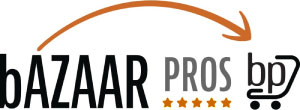Your B2C/D2C sales are finally taking off on your Shopify site and you are getting inquiries for bulk purchases from business or organization customers. Should you just keep serving them as one-off deals with special discounts or set a formal process? Is Shopify even the right platform for B2B?
B2B sales needs are quite different from DTC/B2C sales. What are some possible ways to do this with Shopify? We try to address these questions in detail with specific guidelines to help you make the optimal choice for your business.
Business operational needs of a B2B Wholesale Business
Payment Options:
Only 5% of B2B purchases are made with credit/debit cards
55% of B2B buyers prefer different payment options
Popular Payment options for B2B:
A> Invoicing
B> Purchase order
C> extended credit, and payment plans
User-specific account management needs
Custom pricing: Pricing customized at individual customer level or group of customers level
Discounts: Volume-based pricing and discounts
Sales Negotiation: Invoice review and negotiated sales
Re-ordering: Allow customers to quickly reorder past purchases
How does Shopify meet these B2B needs?
- Tagging Customers: Customer accounts can be tagged and pricing can be set based on tags. This meets the custom pricing by customer groups’ requirements.
- Account-based Marketing: This offers customers a personalized experience
- A customized shopping experience to the end consumer: Brands can also offer customized catalogs that show the most relevant products and recommendations to individual buyers to streamline their shopping experience and help them find products they’re most likely to purchase.
- Extending a line of credit: Apps like Apruve allow customers to set up a business account with its automated B2B line of credit. The customer gets extended payment terms of 30-60 days and, the brand gets the money through a credit network right away.
- Payment plans: Brands can offer customized and flexible payment plans with multiple payment options to customers using apps such as Partial.ly Payment Plans.
- Recurring payment or subscription: Multiple Shopify apps allow setting up recurring orders with Recurring Payment, Subscription & Invoicing options.
The process of selling wholesale on Shopify
Let’s understand different options to use Shopify to sell products to other businesses.
Using discount codes
The easiest way to set up a wholesale price is to create a discount code and send it to your wholesale buyers. This is easy and fast. This technique is a good choice in the following instances:
- You need to have an easy and uncomplicated pricing approach where it will be based on a percentage discount. For instance, the wholesales prices of your products are always 40% of your retail price.
- You handle these orders manually and wholesale customers a small fraction of your business.
- When you are just experimenting with wholesale.
Using a Wholesale App
There are many Shopify Apps that support wholesale selling. These apps can handle the following tasks:
- Use the same B2C store to offer wholesale B2B or custom pricing to premium customers.
- Tag specific groups of businesses and then set the offer price for that particular group. A logged-in customer then will see the discounted or offer price and not the retail price.
- A detailed pricing spreadsheet can be uploaded for different products.
- Capability to send out invoices to be paid utilizing the payment provider that is set up in your Shopify admin
- Sending a personalized invoice email that lets the invoice be paid using various payment techniques, such as a wire transfer.
- Ability to mark the invoice as paid or partly paid as you get paid from external sources.
Some of the popular Wholesale apps are :
Wholesaler app
Bold Custom pricing: Wholesale
Add a wholesale channel (Shopify Plus only)
Shopify Plus allows adding wholesale channels which is basically a password-protected version of B2C store with Wholesale pricing features. Shopify Plus wholesale channel option includes implementing wholesale-specific pricing, automated accounts sign-ups, order review controls, and much more. It is a complete automated solution from sign-up to check-out.
- Percentage-based discounts by collections or across the store
- Fixed (flat) prices for products
- Different prices to different wholesale customers
- Volume-based pricing rules
- Email an invoice to be paid using the payment provider that is set up in your Shopify admin
- Send a customized invoice email that allows the invoice to be paid using a different payment method, such as a wire transfer
- Accept payment by credit card or mark the invoice as paid as you receive payment.
- Cannot integrate with any external systems or third-party apps
- All prices displayed are including Taxes
- Not a custom storefront for Wholesale customer
Opening a separate Shopify store for B2B
Opening a separate store enables you to keep your retail and wholesale stores completely separate.
- Your wholesale customers can be separated from your retail businesses completely. You could use a completely new storefront and theme design to cater to your wholesale business.
- Wholesale and retail store inventories will be completely isolated.
- You need to manage two stores independently
- Most apps charge by store instance so apps used on both stores will double the expense
- Additional Inventory Management Solution (IMS) will be needed if you want to manage both stores’ inventory centrally.
- The additional cost of Shopify instance ( Shopify Plus this can be done for free as expansion store)
Summary:
Shopify is an excellent platform for adding on B2B Sales. There are multiple ways to do this based on the stage of your business. Here are four ways to operate a B2B business on Shopify:
- On the lowest end are special Discount codes on the current B2C site for small-scale B2B sales and/or just testing waters.
- In the middle range is using Third-party wholesale applications. This is best for merchants who want simplicity and who look forward to having just a single store to serve all their customer groups at once.
- Shopify’s wholesale channel works best for Shopify Plus merchants who have a simple ordering channel to receive B2B orders.
- A separate Shopify online store gives B2B customers the most leeway both during and after the project, enabling, among other things, different catalogs and promotions in different stores.
Did we miss anything? What is your experience with B2B Shopify? Let us know in the comments below.

